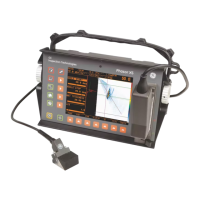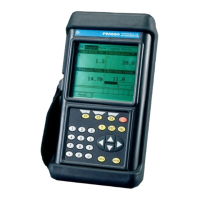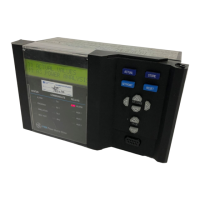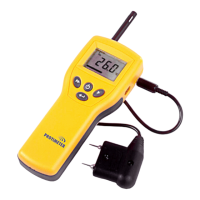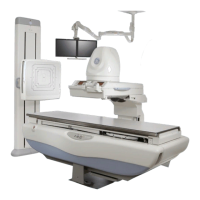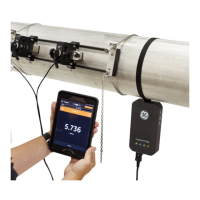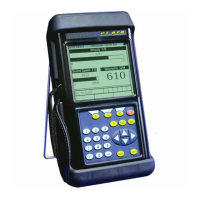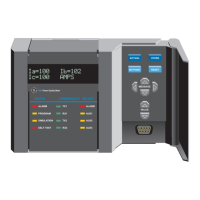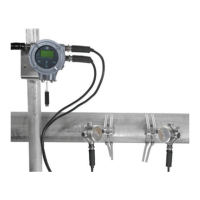3. Operating in Phased Array Mode
Page 36 PHASOR XS Operating Manual
• DA^—Corrected material-thickness depth from the
testpiece surface (the probe-contacted side) to the
reflector represented by the highest echo in A-Gate
(in the beam selected by the beam cursor).
(see
Figure 3-3)
• DA/—Corrected material-thickness depth from the
testpiece surface (the probe-contacted side) to the
reflector represented by the first echo in A-Gate (in
the beam selected by the beam cursor).
(see
Figure 3-3)
• ZA^—Uncorrected depth to the highest echo cap-
tured by Gate A.
• ZA/—Uncorrected depth to the first echo captured
by Gate A.
• A%B—Amplitude (as a % of full-screen height) of
the highest echo to cross B-Gate in the beam se-
lected by the beam cursor.
• SB^—Sound-Path distance or duration represented
by the highest echo to cross B-Gate in the beam
selected by the beam cursor.
• SB/—Sound-Path distance or duration represented
by the flank echo to cross B-Gate in the beam se-
lected by the beam cursor.
• PB^—Projection distance from the beam index point
(BIP) to the reflector represented by the highest
echo in B-Gate (in the beam selected by the beam
cursor). (see
Figure 3-3)
• PB/—Projection distance from the beam index point
(BIP) to the reflector represented by the flank echo
in B-Gate (in the beam selected by the beam cur-
sor). (see
Figure 3-3)
• DB/—Corrected Material-thickness depth from the
testpiece surface (the probe-contacted side) to the
reflector represented by the flank echo in B-Gate (in
the beam selected by the beam cursor). (see
Figure 3-3)
• ZA/—Uncorrected depth to the flank echo captured
by Gate B.
• OFF—No reading will be displayed in the reading
box.
The four measured readings can be displayed in any
of the four small reading boxes at the top of the display
screen. In addition, the result displayed in one of the four
small boxes can be shown in the large reading box (see
Figure 3-2). Also note that when time-of-flight or thickness
readings are displayed, the detection method selected
for that gate is indicated with a ^ (representing PEAK)
or / (representing FLANK). See 2.8.2 to select detection
methods.
Assigning Measured Readings to the Displayed
Reading Boxes (DISPLAY-RESULTS1 or 2-
READING #)
The display includes a total of five boxes where measured
values can be displayed (
Figure 3-4). Four “small” reading
boxes can each contain one of four measured values. A
“large” reading box can display, in a larger format, any
one of the values shown in the small boxes. To define the
reading-box contents:
Step 1: Activate the DISPLAY Menu.
Step 2:
Select the RESULTS1 Submenu (or select
RESULTS2 for the large reading box).
Step 3: Select the READING box location you wish to
specify by pressing
, then press
again or turn the
Function Knob to choose from several of the selections
listed above (available readings depend on designated
operating mode).
NOTE: While TCG reference points are being recorded,
two measurement result boxes will be automatically
set (if not already configured) to display PSA and P%A
values. These result selections will remain locked until
the TCG recording process is finished.
NOTE: When S, D, or P readings are displayed, the
TOF Detection Mode (2.8.2) setting for the referenced
gate (A or B) is indicated by a ^ (Peak Mode) or a /
(Flank Mode).
3.3 Controlling A-Scan Orientation and
Beam Cursor Position
Linking the A-Scan to the Sector or Linear Scan
(DISPLAY-VIEW-ASCAN MODE)
When an A-Scan is displayed together with either a Sector
or Linear Scan, the A-Scan position can be set to align
with the other displayed Scan or the A-Scan can be sim-
ply set to display down the full height of the screen (see
Figure 3-4). To change the A-SCAN MODE:
Step 1: Activate the VIEW Submenu (located in the
DISPLAY Menu) by pressing
below it. Functions will
appear down the left side of the display screen.
Step 2: Press
next to the selection titled ASCAN
MODE. Continue to press
and note the options are:
BUD—Beam Ultrasonic Depth – any vertical loca-
tion along the A-Scan corresponds to the same
vertical location on the beam-cursor selected beam
in the Sector or Linear Scan image. This corre-
spondence is maintained, even when the displayed
sector’s range is modified with changes to the LEG
setting (
Section 2.6.1).
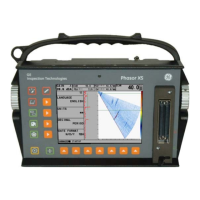
